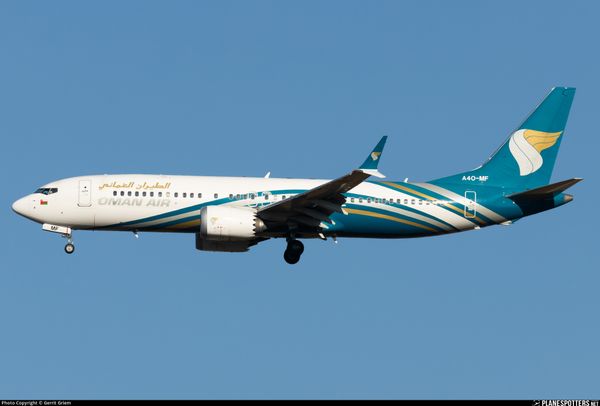Flying standby is a tool travelers and airline employees use to reach a destination without paying for a ticket or on an earlier flight than the original confirmed ticket.
While it sounds like a really nice thing, flying is not always the easiest or stressless experience. Weather, time of day, aircraft size, route popularity, and many other factors can make the experience a nightmare at times and, at worst, strand you at an airport hundreds or thousands of miles from where you want to be by the end of the day.
What is Flying "Standby"?
A common misconception about flying standby is that you will get a seat, you just don't know where on the plane. That is simply false, as you are at the mercy of both the amount of confirmed passengers on the flight, and other standby flyers that might be ahead of you on the list.
Missing a flight on standby is a very common issue, and this article will help give you tips and tricks to maximize your chances of making it on flights you do list standby for.
While there are many reasons to miss a flight when flying standby, we are going to cover the ones that I believe are the most crucial to their "Domino Effect" on airline operations and seat availability if something in these categories goes wrong.
Passenger Count
The first one is very simple, and will be the end-all argument for all other factors discussed later in the article, the amount of confirmed passengers on the flight (and standbys ahead of you on the list). Flights with more seats open will give you a better shot at getting a seat on the flight.
This especially matters when you have other standby flyers with the same mindset, as any standby flier ahead of you on the list will have to make it on before you get the chance to do so.
For example, say a Delta flight on a 757-200 has 199 total seats, with 190 being occupied by confirmed and ticketed passengers. If 20 standbys make up the list, and you are number 12 on that list, you are technically passenger number 202 on the flight.

Make it on, you would need at least 3 passengers and/or standbys ahead of you on the list to "no-show" at the initial boarding call, and only then would you get the seat. While flying standby with this logic might create some long layovers or itineraries that aren't nonstop, you have the best chance of making it to your destination.
Time of Day
This one is important, because if you miss a flight early in the day due to it being full, you can just list for the next flight of the day to that destination. Flying standby at the end of the day could mean an unexpected overnight airport stay if you miss the last flight of the day to that destination.
Also, the weather (especially during the summer) tends to be better in the morning, so flying standby then gives you a better shot of getting to your destination.
If the weather turns sour as the day rolls on, cascading delays occur, which bump confirmed passengers off one flight and onto later ones in the day, thus hurting your own chances of making that later-in-the-day flight you might have listed standby for.

Route Popularity/Time of Year
This one is a constant fluctuating balancing act, as some routes are more popular during the summer, and some during the winter.
Flying to Europe in the summer is normally some of the worst stories (and most common) I have heard from friends who fly standby, so knowing when certain routes are expected to be more full can help a standby flier plan out a successful trip.
But when a route is popular at all times of the year, this is when you apply the "Time of Day" and "Passenger Count" rules to your standby trip planning.
Aircraft Size/Flight Frequency
Another easy one, but often overlooked. Aircraft with more seats carry more passengers, more seats on a given route give a higher chance of seats being empty. This especially becomes important on routes that are constantly popular.
For example, if a 300+ seat A350-900 gets scheduled on an ATL-LAX turn instead of the normal 190-seat A321, this is a great opportunity for a standby flier to get on a flight that otherwise would normally be full. Also, a route with higher frequency gives more opportunities for a standby flier to get where they need to go.
Cities With Multiple Airports
This one is a bit subjective, but if a standby flier needs to get to a major city (but where in the city doesn't matter) this is where metropolitan areas with multiple airports come in handy. Take flying to Los Angeles for example. Within the greater Los Angeles area, you have Burbank, Santa Ana, Ontario , and Long Beach.
So if a flight to LAX is full, you could check standby lists for flights going to any of these 4 other airports, thereby increasing your chances of making it to the general area of where you need to be. The only other consideration is ensuring the airline you want to fly standby on serves these other airports, again making for the case of this category being subjective.
Summary
As you can see, flying standby can take a lot more planning than one might think. The biggest takeaway I do want to push is that every factor listed in this article has a direct correlation to the first one listed, available seats, which is the entire fundamental of flying standby.
Also, I must emphasize that no matter how well you plan a standby trip, you are never guaranteed a seat until the gate agent hands you that magical stub of paper with a seat assignment. But, if you do consider all of these factors together when planning out a standby trip, you are likely giving yourself a much higher chance of success.
Engine Failure Forces United 777 Emergency Landing, Starts Brush Fire at Dulles Airport » Making a Stopover in Dubai? Discover How to Book a Yacht and Explore the City in a New Way » How Borders Shape Human Stories »
Comments (0)
Add Your Comment
SHARE
TAGS
INFORMATIONAL flyingstandbypassengerflightnonrevhowtoflyseat Delta American UnitedRECENTLY PUBLISHED
 Oman Air Returns To Singapore After Nine Years with New Boeing 737 MAX Service
Oman Air Returns To Singapore After Nine Years with New Boeing 737 MAX Service. It will resume nonstop service to Singapore Changi Airport (SIN) starting July 2, 2026, restoring a vital link between the Sultanate and Southeast Asia that was suspended in 2017.
ROUTES
READ MORE »
Oman Air Returns To Singapore After Nine Years with New Boeing 737 MAX Service
Oman Air Returns To Singapore After Nine Years with New Boeing 737 MAX Service. It will resume nonstop service to Singapore Changi Airport (SIN) starting July 2, 2026, restoring a vital link between the Sultanate and Southeast Asia that was suspended in 2017.
ROUTES
READ MORE »
 Wizz Air Relaunches Suceava Base with Two A321neos and Seven New Routes
Wizz Air has officially reopened its base at Suceava "Stefan cel Mare" International Airport (SCV). The reopening immediately enhances connectivity by launching seven new direct routes to five countries.
ROUTES
READ MORE »
Wizz Air Relaunches Suceava Base with Two A321neos and Seven New Routes
Wizz Air has officially reopened its base at Suceava "Stefan cel Mare" International Airport (SCV). The reopening immediately enhances connectivity by launching seven new direct routes to five countries.
ROUTES
READ MORE »
 How Borders Shape Human Stories
The existence of borders can be seen through not only maps; they are also emotional markers that determine how an individual travels or moves, how an individual dreams, and what the individual considers to be their place in the world.
INFORMATIONAL
READ MORE »
How Borders Shape Human Stories
The existence of borders can be seen through not only maps; they are also emotional markers that determine how an individual travels or moves, how an individual dreams, and what the individual considers to be their place in the world.
INFORMATIONAL
READ MORE »



